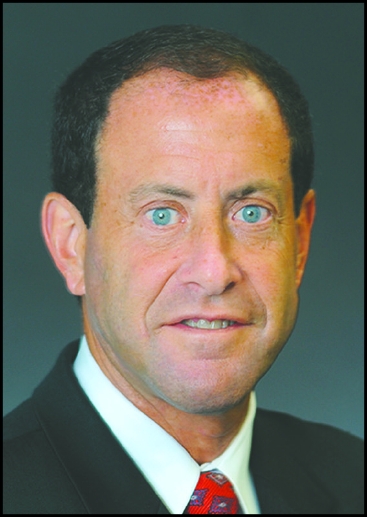Financial Management
High-Impact Legislation, Innovation and Resolve Are Drivers for Challenging Construction Season
By PHILLIP ROSS, CPA, CGMA, PARTNER

Despite the challenges of inflation and economic uncertainties, the buoyant construction industry is poised for an interesting second half of 2024. Impactful legislation, innovative practices, and strong collaborative efforts drive the sector’s resiliency, but it is not without its challenges—as highlighted by industry leaders at this year’s recent Anchin awards event.
Greg Kelly, P.E., president and CEO of STV, spoke at the industry event. Mr. Kelly’s address centered on the industry’s shared purpose of enacting positive changes within communities. He reflected on the current state of real estate and construction, highlighting the sector’s robust foundation and potential for growth.
Mr. Kelly underscored the industry’s commitment to driving societal progress through construction projects that build infrastructure and enhance community well-being. His insights set the tone for a forward-looking discussion on how the construction industry can capitalize on emerging opportunities.
Key legislative measures are set to move the construction industry forward, fostering an environment ripe for growth and innovation. Indeed, several pivotal laws are already reshaping the industry landscape.
Bipartisan Infrastructure Law – The Bipartisan Infrastructure Law is a cornerstone of generational investment and workforce adaptation. This legislation has ushered in a new era of funding for public projects, catalyzing numerous construction initiatives. According to USDOT, there are 1,702 bridges and more than 7,292 miles of highway in poor condition in New York. Since BIL was signed in September 2022, New York has identified to receive approximately $8.4 billion for transportation to invest in roads, bridges, public transit, ports and airports and roughly $472 million for clean water.
Locally, the Gateway Tunnel Project has just received $16 billion in federal funding after years of delays and is set to generate $20 billion in economic impact through improved rail infrastructure between New York and New Jersey. The Tarrytown-Sleepy Hollow Safe Streets and Roads for All initiative is just another initiative to receive federal BIL funding, totaling $340,000. An Arsenic Mine Superfund site remediation project in Putnam County received $670,000.
These initiatives are not only creating employment opportunities but also are generating an economic ripple effect that benefits suppliers, manufacturers, and other related industries.
CHIPS Act – The CHIPS Act boosts domestic semiconductor manufacturing and drives related construction projects. This legislation supports the construction of new semiconductor manufacturing plants (fabs) and research and development centers.
The demand for specialized construction services, including clean rooms and high-tech facilities, is increasing. Infrastructure upgrades to support new manufacturing facilities, such as power supply, water treatment, and waste management systems, are also becoming essential.
At the local level, Green CHIPS incentives in New York offer up to $10 billion for environmentally friendly semiconductor manufacturing and supply chain projects. The state is host to 76 semiconductor companies, which employ 34,000 people.
Late last year, Gov. Kathy Hochul announced a $10-billion partnership with leaders from the semiconductor industry such as IBM, Micron, Applied Materials, Tokyo Electron, and others to establish a next-generation semiconductor research and development center at NY CREATES’ Albany Nano-Tech Complex. The complex will host a newly built High NA Extreme Ultraviolet Lithography Center—the first and only publicly-owned High NA EUV Center in North America.
With the availability of shovel-ready sites and tens of thousands of STEM-related graduates every year, specialized construction related to the industry is almost guaranteed to grow.
Inflation Reduction Act – The Inflation Reduction Act emphasizes public and private investment and partnership, focusing on green building and renovations. The act offers tax credits and rebates for energy-efficient building materials and systems, encouraging the construction and renovation of buildings to be more energy-efficient. It also provides funding and incentives for renewable energy projects, such as solar, wind, and geothermal installations, which drive the construction of new renewable energy infrastructure.
This legislation boosts sustainable construction practices by promoting higher energy efficiency standards for new buildings and retrofits. Incentives for sustainable construction practices encourage the adoption of green building certifications (e.g., LEED) and the use of environmentally-friendly materials. In New York, many developers also utilize alternative financing like C-PACE amidst a distressed market, meaning more sustainability and building improvement projects for contractors. Over the last year, New York-based Nuveen has closed on $1.3 billion in CPACE vehicles, providing new capital for sustainability and green energy improvements for several projects and more work for construction firms.
As the construction industry in New York navigates the second half of 2024, a challenging year regarding inflation and stagnation, it does so with resiliency and purpose. Impactful legislation, innovative practices, and collaborative efforts drive growth and create opportunities for positive community changes.
About the author: Phillip Ross, CPA, CGMA is an Accounting and Audit Partner and Chair of the Construction Industry Group at Anchin, Block & Anchin, LLP. For more construction industry thought leadership and content, log on to www.anchin.com.
